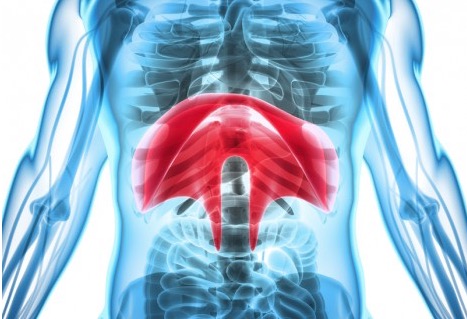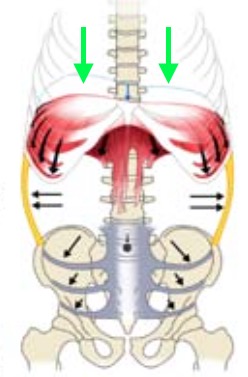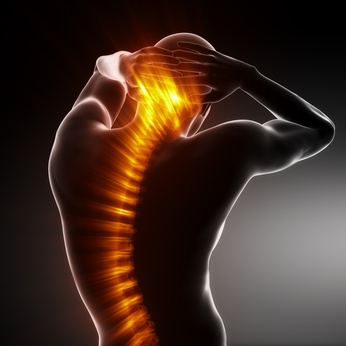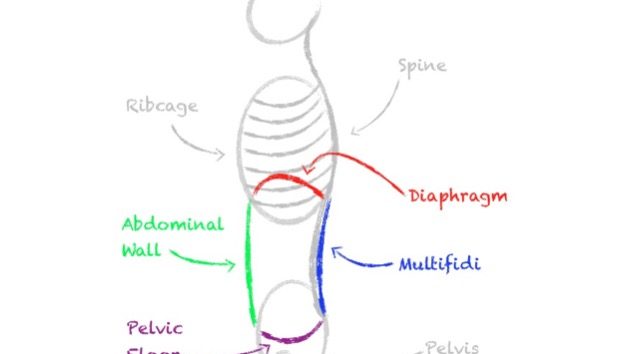
The Diaphragm’s Role For a Healthy Spine and Body
The diaphragm is a breathing AND a core stabilizing muscle. It must be able to switch roles and be able to perform both roles at the same time. If you are lying down, the diaphragm is dedicated solely to breathing (far left side of graph in blue). There is no external load applied to your body so the stabilizing role is absent. If you are attempting to lift a 200lb object off the floor, the diaphragm is dedicated solely to stabilizing your core and you will hold your breath throughout the movement (far right of graph in red). The breathing role is absent. Prior to any movement, the diaphragm contracts and pushes down towards the abdomen. At the same time, the abdominal wall and muscles of the pelvic floor expand and “tighten up.” This compresses the abdomen which creates intra-abdominal pressure (IAP). IT IS IAP THAT GIVES US STRENGTH, STABILIZES OUR CORE AND PROTECTS OUR SPINE FROM INJURY.
Prior to any movement, the diaphragm contracts and pushes down towards the abdomen. At the same time, the abdominal wall and muscles of the pelvic floor expand and “tighten up.” This compresses the abdomen which creates intra-abdominal pressure (IAP). IT IS IAP THAT GIVES US STRENGTH, STABILIZES OUR CORE AND PROTECTS OUR SPINE FROM INJURY.
The majority of the time, the diaphragm is used for breathing and creating IAP at the same time (overlapping roles on graph). This occurs during most movements and activities, such as walking, running, repetitive tasks, etc. This is very difficult for most people to do.
How To Test Your Diaphragm

“Flex, “tighten,” or “brace” your abdominal wall to create IAP and then breathe into your abdomen while maintaining IAP for several breaths. Your chest and shoulders should not lift up during the inhale. Your abdomen should expand and feel like it is filling with air. You should be able to keep your abdominals “flexed”/maintain IAP on the exhale. This is the hard part! If you are unable to inhale and exhale with a braced abdomen, you have a dysfunctional diaphragm.
This is the cause of many spine conditions, such as neck and back pain. This problem also has a “trickle effect” into hips and shoulders that can extend out to hands and feet. If you can’t breathe and create IAP properly, you will not only be UNABLE to correctly stabilize your core, but you will be UNABLE to correctly stabilize your hips, shoulders, etc. as well.
Testing the diaphragm is an important part of my examination process with patients. If it is not working properly, we implement treatment and exercises to rehabilitate this very important yet most neglected muscle in the body. I have helped many patients with this approach no matter what type of pain or musculoskeletal problem they have.
I help people every day with problems caused by a dysfunctional diaphragm. If you or someone you know is having ongoing spine or extremity problems, contact me to see if I can help.

